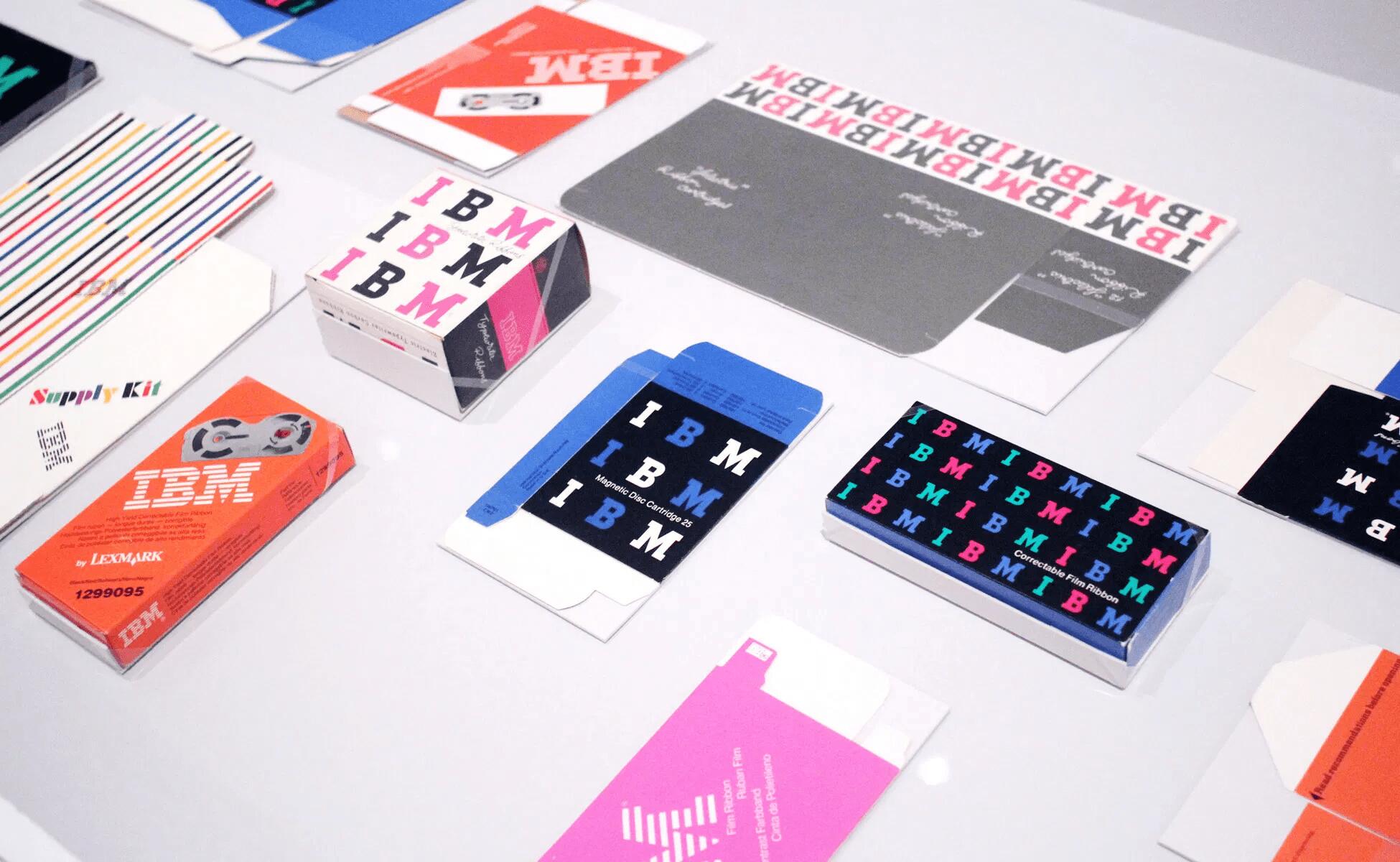Table Of Content

Note the shadows that give the simple composition an engaging depth.

Who is the father of Graphic Design?
It would remain influential for decades, making the case for the essential relationship between how something looked and what it accomplished. A good piece of commercial art had to be both beautiful and persuasive, Rand argued. As Heller notes, Rand "valued both aesthetic perfection and clear communication." For Rand, advertising wasn't a dirty job. It was a chance to instill a bit of beauty into peoples' lives---just so long as that beauty was in service of selling the product. Rand designed the logos for a number of major commercial firms, including IBM, the American Broadcasting Company, and Westinghouse Corporation. His commitment to design education, combined with his writings and numerous visual innovations, constitutes a lasting legacy for American designers.
How to design an enduring logo: Lessons from IBM and Paul Rand - Quartz
How to design an enduring logo: Lessons from IBM and Paul Rand.
Posted: Thu, 23 Jul 2015 07:00:00 GMT [source]
Similar Businesses
Famously working with IBM, he revolutionised their approach to brand, developing a bright, modern logo that could be used across all communication channels, be it print media, packaging, billboards or the side of buildings. The IBM logo told a clear story about the company and where it stood as a symbol of Post War global culture, as well as how that defined American success as a whole during this period. In an interesting way the chronology of Paul Rand’s design experience has paralleled the development of the modern design movement.
Report a Duplicate Memorial
Lustig was also a consultant to the University of Georgia and taught at Black Mountain College and Art Center. For Rand, in the age of McCarthyism, honesty was critical, especially when it came to corporate brand identity. In this febrile atmosphere of distrust and suspicion that descended on suburban America during this period, his American roots were a perfect foil to his modernist European contemporaries.
Cursive Logos on the Decline - Online graphic design magazine - RoozRang
Cursive Logos on the Decline - Online graphic design magazine.
Posted: Wed, 10 Jan 2024 08:00:00 GMT [source]
This was the same year in which he received the gold medal from the Art Directors Club for his Morse Code advertisement addressed to David Sarnoff of RCA. The fact that some of the best symbols are simplified images merely points to the effectiveness of simplicity but not to the meaning of the word per se. In essence, it is not what it looks like but what it does that defines a symbol. Rand was a professor of graphic design at Yale University in New Haven, Connecticut where he taught from 1956 to 1969, and from 1974 to 1985.[1][2] He was inducted into the New York Art Directors Club Hall of Fame in 1972. Rand presented the logo in a 100 page document which laid out clearly the process he had gone through to come up with the design.
Leave a Flower
One must underline that at that time, in the middle of the Cold War, abstract artists (like Pollock) were promoted by the American government via the Congress for Cultural Freedom, a propaganda organization. In contrast with the figurative communist art, the red enemy, abstract art was praised by large fortunes and institutions such as the MoMA, Rockefeller, or IBM. Because it was new and exhilarating, or simply to avoid the wrath of the government that blacklisted "communist witches" or anyone with sympathizing ideas, artists embarked on this art which also guarenteed political immunity. He not only had to create a design system for the sprawling company but also convince the designers at its many outposts to adhere to that system. He worked on packaging, on showrooms, on interiors for the company's offices. "The other thing he does is introduces all of these bright colors," Albrecht says.
He is probably one of the most influential American Modernist graphic designers of the 20th century, certainly in America. Developing his career in magazine design, he created graphic images for book covers, posters and advertising, although it was his approach to corporate brand and logo designs that catapulted him into fame. It was Paul Rand who developed the meaning of a consistent brand identity and companies quickly took note about what he had to say. Paul Rand was a leading figure in twentieth-century graphic design. He helped revolutionize commercial art in America during the 1930s, advocating the functional yet beautiful designs envisioned by European modernists. His work communicated a clear message to the viewer by combining recognizable symbols, text, and humor in an eye-catching way.
Ron Paul: Final nail in America’s coffin?
As art director and critic Steven Heller points out in his definitive monograph on the designer, Rand was one of the first American graphic designers to look to Europe for inspiration. As a student, he became obsessed with commercial arts journals from Britain and Germany, which featured cutting-edge work by graphic designers like A.M. He absorbed new typographic theory from Switzerland and drank in the Modernist thinking on form and function coming out of the Bauhaus in Germany.
What is not well known is the significant role he played in setting the pattern for future approaches to the advertising concept. Paul was probably the first of a long and distinguished line of art directors to work with and appreciate the unique talent of William Bernbach. IBM is the first company for which he conceives a brand identity and all visual communication campaigns. While this is only a fraction of his work, his achievements for ABC, UPS, Westinghouse, Cummins or Enron become visible and ubiquitous in the United States and abroad. They are the symbol of a post-war global culture crowning the political, military and commercial success of the United States.
During 1950s and 1960s, Paul Rand became a brand name for logo designing in corporate industry. Many of the above mentioned firms owe their graphic designing heritage to him. In 1956, IBM became one of the companies that truly defined his corporate identity. He revised the IBM logo design in 1960 and yet again in 1972 with the famous stripes pattern.
One of his notable designs was featured on the cover of Direction magazine, which he created free of charge in honor of artistic freedom. Born Peretz Rosenbaum in 1914 and deceased in 1996, Paul Rand is a graphic design legend. Throughout his 60-years long career, he changed America's opinion on visual communication. With his editorial designs, advertisements, and visual identity works, Rand brought avant-garde European ideas to the United-States, mixing visual arts and commercial design. His colourful combinations, approach of typography and use of media translate his desire to "defamiliarize the ordinary". His style consequently still have an impact on graphic design today.
He radically transformed advertising, blowing away the dust of the Depression era and pioneering a new, modern approach to selling products. He helped convince some of nation's biggest corporations that good design was good business, crafting indelible logos for the likes of IBM, UPS, and ABC. It is Rand's book covers, in my opinion, that are the epitome of mid-century modern design; something I just adore. His use of flat geometric shapes, bold colors and whitespace is quintessential mid-century modern design. In these examples, each one hints at the message conveyed within the book by use of symbolism to represent the message.
So in the worst example of “bipartisanship,” Johnson reached across the aisle, stiffed the Republican majority that elected him Speaker, and pushed through a massive gift to the warfare/(corporate) welfare state. Cemeteries found within kilometers of your location will be saved to your photo volunteer list. Cemeteries found within miles of your location will be saved to your photo volunteer list. Continuing with this request will add an alert to the cemetery page and any new volunteers will have the opportunity to fulfill your request. For memorials with more than one photo, additional photos will appear here or on the photos tab.


No comments:
Post a Comment